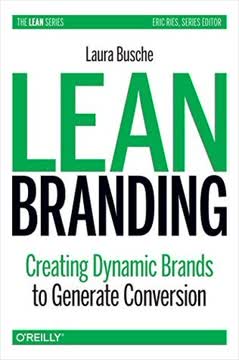Key Takeaways
1. Your Brand is a Dynamic Story, Not Just a Logo.
Everything and everyone represents at least one brand.
Beyond aesthetics. A brand is far more than just a logo or a superficial visual identity; it's the unique, evolving story consumers recall when they think of you. This story weaves together your product, its personality, your promise to solve a problem, and your position relative to competitors, all communicated through visual symbols and strategic conversations. Many startups mistakenly believe branding is an afterthought or solely the domain of graphic designers, but this narrow view is a dangerous misconception that can hinder growth.
Consumer co-creation. In today's chaotic marketplace, consumers don't passively receive your brand story; they actively co-create it through every interaction. From your name and pitch to your interface and customer service, every touchpoint contributes to their perception. This means you can't dictate your brand's terms; instead, you must strategically participate in these ongoing conversations, understanding that your brand is a living entity that breathes, eats, reproduces, and gets haircuts.
Lean and dynamic. Successful brands are "chameleons," constantly adapting to consumers' ever-changing needs and desires. They embrace continuous iteration through a "Build-Measure-Learn" cycle, putting assumptions to the test and evolving based on what they learn. This agile approach ensures your brand remains relevant and impactful, transforming outsiders into loyal customers.
2. Brands Offer Shortcuts to Customer Self-Realization.
Lean brands inspire consumers to buy apps, order food, trust certain people, and pull books off the shelf by offering ever-evolving shortcuts to their self-realization.
From A to B. At its core, a brand's mission is to help customers move from "Point A" (who they are today) to "Point B" (who they aspire to be tomorrow). Every purchase is driven by an underlying aspiration, whether it's becoming more organized, healthier, or more independent. Your brand's value proposition lies in being the propeller, the enabler, or the shortcut that facilitates this journey of self-realization for your target audience.
Beyond features. In a saturated market, simply selling a "bunch of features" is a losing strategy. People buy from meaningful brands that resonate with their hopes, fears, and aspirations. By positioning your brand as a solution to these deeper desires, you build long-term relationships that transcend mere product functionalities. This empathetic approach fosters a connection that opens both hearts and wallets.
The "So what?" factor. Every brand communication should answer the consumer's fundamental question: "What's in it for me?" This isn't about altruism; it's about clearly articulating how your product or service genuinely improves their life or helps them achieve a desired state. Lean brands understand this and continuously refine their message to ensure it provides a compelling, ever-evolving shortcut to their customers' aspirations.
3. Build Your Brand Story with Six Essential Elements.
Your brand story’s “happily ever after” involves open wallets.
Story-showing, not telling. Before diving into digital channels or marketing tactics, you need a compelling brand story. This isn't about lengthy explanations but about "story-showing" – demonstrating your value in an engaging, persuasive way. A strong brand story is your unique chance to make a case for your product, ensuring that digital channels amplify a meaningful message rather than swallowing an undefined one.
Six core ingredients. A robust brand story is built upon six interconnected elements:
- Positioning: The unique "parking space" your brand occupies in the consumer's mind, projecting it as an aspiration enabler for a specific segment.
- Promise: A concise, memorable phrase encapsulating your core value offer, answering "What do you promise to do for me?"
- Personas: Fictional characters representing your ideal customers, based on real needs and aspirations, guiding all brand communications.
- Personality: The humane psychological qualities associated with your brand, dictating its voice and interactions in the marketplace.
- Product: The holistic "product experience," encompassing not just features but also service, support, and every touchpoint of value delivery.
- Pricing: How your solution's worth is communicated, aligning with customer perception and business health.
Research-driven narrative. Crafting these elements requires deep customer understanding, often through ethnographic research like in-depth interviews, "fly on the wall" observations, and shadowing. This "going out there" approach helps uncover real needs and aspirations, ensuring your brand story is grounded in reality and resonates with your target audience, ultimately leading to conversion.
4. Visual Symbols Form Crucial First Impressions.
Consumers are probably making first impressions based on symbols surrounding your core product.
The 50-millisecond judgment. Human beings form first impressions incredibly quickly—within 50 milliseconds online and 7 seconds in physical encounters. These judgments are often based on visual cues, making your brand's visual identity paramount. While a great product is essential, its initial perception is heavily influenced by its surrounding symbols, such as your landing page, social media presence, or even a business card.
Strategic design. Design is not mere decoration; it's a strategic business tool that creates, adds, and communicates value. Companies like Apple and Airbnb demonstrate how integrating design into core business planning can profoundly impact user interaction and market success. Your brand's visual symbols—logo, color palette, typography, and imagery—must be intentionally crafted to reflect your brand story and influence consumer perception.
Building your visual identity. Developing effective visual symbols involves a structured process:
- Brand Wall: A physical space to collect visual inspiration, competitor analysis, and design ideas.
- Logo Workshop: Brainstorming emotional and cognitive impact, graphic symbols, and typographic choices.
- Color Palette: Selecting colors that align with your brand's personality and cultural meanings.
- Typography: Choosing fonts that convey the desired emotional impact and brand voice.
- Imagery & Mockups: Showing your product in context, illustrating the aspirational "Point B" for customers.
- Stationery & Collateral: Designing impactful business cards, one-sheets, and slide decks that reinforce your brand's message.
5. "Show, Don't Tell" Through Strategic Communication Channels.
Am I showing or telling?
The showtime imperative. In a world of busy, busier, and busiest potential buyers, your brand communications must "show, not tell." This means demonstrating your value proposition through engaging visuals, videos, and interactive content, rather than simply explaining it. Digital channels are powerful tools for reaching, engaging, and converting customers, but only if they amplify a meaningful brand story, not just a monologue.
Strategic channel selection. Effective communication isn't about being everywhere, but about being where your target audience spends their time. Each channel—be it social media, email, or a landing page—has its own format, rules, and audience demographics. Your strategy must tailor your brand message to fit these specific contexts, ensuring convenience over interruption.
Key communication ingredients:
- Social Media Marketing: Engaging platforms like Facebook, Twitter, Pinterest, and Instagram with cautious, consistent, concise, convenient, shareable, and multimedia-rich content.
- Landing Pages: Dedicated sites designed for conversion, featuring clear headlines, benefit-focused copy, compelling visuals, and strong calls to action.
- Search Engine Optimization (SEO): Making your content clever enough for search engines to find and properly reference your brand, using relevant keywords and quality backlinks.
- Content Marketing (Blogging): Establishing thought leadership and building trust by providing valuable, problem-solving content.
- Paid Advertising: Strategically placing display, search, and social network ads where your customers are most likely to see and convert from them.
- Email List: Building mid- to long-term relationships through segmented, personalized, and value-driven communications.
- Video: Creating concise, visually powerful narratives that demonstrate how your brand helps customers achieve their aspirations.
- Review Systems: Leveraging existing customer feedback to build credibility and convert new buyers.
- Media Relations: Crafting compelling press releases and pressroom assets to secure media coverage.
- Point-of-Purchase Optimization: Designing the sales environment (online or offline) to make purchasing easy and confident.
- Partnerships: Collaborating with influencers, other brands, or affiliates to expand reach and build trust.
6. Measure Everything: Validate Assumptions with Actionable Metrics.
Lean brands are the result of continually testing assumptions.
Beyond vanity metrics. The "Build" phase is about making assumptions; the "Measure" phase is about validating them. Without clear conversion goals and actionable metrics, data can be overwhelming, leading to "vanity metrics" that look good on paper but offer no real insight into business growth. True measurement focuses on what drives your business: getting, keeping, and growing customers.
Designing effective tests. Every test involves a clear hypothesis, a measurable indicator, an expected result, and a comparison with the actual outcome. Split (A/B) testing is crucial for isolating the impact of specific changes, allowing you to understand why a particular element succeeded or failed. Remember to test only one variable at a time to gain clear insights.
Measuring communication traction:
- Landing Pages: Track visitor behavior, conversion rates, and A/B test elements like headlines, copy, imagery, and calls to action using tools like Google Analytics.
- Social Media Marketing: Monitor post reach, engagement (likes, shares, comments), follower growth, and external referrals to conversion pages using platform-specific analytics (Facebook Insights, Twitter Analytics) and social media management tools.
- SEO: Analyze keyword performance, search engine rankings, and traffic sources using Google Analytics and SEO tools to understand how users find your brand.
- Paid Advertising: Utilize conversion pixels and codes (Google AdWords, Facebook Ads) to track actual purchases or sign-ups resulting from your ads, optimizing for cost-per-conversion.
- Blogging: Measure readership, time on page, social shares, and direct conversions from blog posts using analytics and sharing tools.
- Email Marketing: Track open rates, click-through rates, and the influence of email campaigns on conversion goals via email service provider analytics and Google Analytics.
- Video: Monitor views, engagement, and conversions driven by calls to action embedded in or around your videos using platforms like YouTube Analytics.
- Press Releases & Partnerships: Use traceable links, unique codes, and dedicated landing pages to measure media coverage, referrals, and direct conversions.
- Point-of-Purchase: Assess sales copy, imagery, and trust elements through sales data and user feedback tests (e.g., 5-second tests).
7. Achieve Brand-Market Fit by Measuring Resonance.
Resonance is about having a compelling and context-specific answer for your buyer’s “what’s in it for me?” question.
The "gong effect." Brand resonance occurs when your brand story deeply connects with your market's expectations, aspirations, and demands, creating a "gong effect" where customers pulsate in response to your message. This signifies an authentic "brand/market fit," aligning your core promise, positioning, product journey, and personality with your buyer personas' desires. Without resonance, your brand story, like a cupcake baked at the wrong altitude, will fall flat.
Uncovering deeper truths. Measuring resonance goes beyond surface-level feedback; it involves probing to understand the underlying motivations that drive customer engagement. Techniques like "laddering" help uncover the true "key benefit" of your brand by repeatedly asking "Why is that important to you?" This qualitative data is crucial for refining your brand story to truly resonate.
Measuring story elements:
- Brand Name: Use association maps and A/B testing (e.g., Pickfu, VerifyApp) to assess how well potential names align with your brand story and appeal to your audience.
- Brand Positioning: Conduct in-depth interviews and content analysis of customer feedback to determine if your intended positioning is being correctly perceived and if it addresses real needs.
- Brand Promise: Employ 5-second tests to gauge immediate recall and interest in your concise value proposition.
- Buyer Personas: Continuously update demographic (Google Analytics) and psychographic (surveys, interviews) profiles to ensure your "fake buyers" still reflect your real customers.
- Product Journey: Utilize KANO analysis to identify "must-have" versus "nice-to-have" features, and value opportunity analysis to assess perceived value at each touchpoint.
- Brand Personality: Use short questionnaires with personality traits to measure how customers perceive your brand's human-like qualities.
- Pricing: Approximate "willingness to pay" through surveys and competitive analysis, understanding that pricing must align with perceived value.
8. Your Brand's Visual Identity Must Be Continuously Tested.
If you don’t have time to see what your brand’s visual identity means, you better have time to fix it when nobody else cares.
Symbolic consumption. Consumers act based on the meanings they ascribe to things, and products convey symbolic meaning beyond their functional features. Your brand's visual identity—logo, colors, typography, imagery, stationery, and collateral—is the gateway to creating these meanings, making it crucial to get right. These symbols must effectively communicate your brand's story and problem-solving essence.
Comprehensive visual testing. Measuring the effectiveness of your visual identity involves assessing several key aspects:
- Awareness: How memorable and distinctive your symbols are (e.g., memory tests).
- Positive/Negative Affect: Consumers' immediate emotional reaction (e.g., thumbs up/down tests).
- Emotional Impression: The specific emotions activated by your visuals (e.g., mood tests).
- Comparative Advantage: How your symbols stack up against competitors (e.g., preference tests).
- Feedback: Open-ended input for improvement (e.g., annotation tests).
- Conversion Potential: The direct influence of your visual symbols on purchase intention or desired actions.
Tools for agile testing. A variety of online and offline tools facilitate this testing, from simple questionnaires and structured interviews to specialized platforms like VerifyApp, InfluenceApp, and 5 Second Test. These tools can recruit respondents, integrate with social media, and provide rapid feedback. The key is to collect a substantial pool of data and look for patterns, rather than relying on individual opinions.
9. Rechannel Your Brand to Adapt to Evolving Audiences.
With rechanneling, we are basically changing the way in which our brand is poured out into a world of consumer co-creation.
Beyond 1969. The landscape of communication channels has dramatically evolved since the days of limited radio and TV ads. Today, brands have unprecedented access to niche communities and measurable platforms. Rechanneling means strategically shifting how your brand's message is delivered across these diverse channels, adapting to where your audience is and how they consume information, without altering the core brand story.
Learning from successful rechanneling:
- OhMyDisney: Disney adapted its timeless brand story for a millennial audience by creating a new blog with Internet slang, memes, and GIFs, leveraging new content formats for a "grown-up" demographic.
- J.Crew: The fashion retailer moved its traditional catalog to Pinterest, adapting its visual assets to a photo-sharing platform to reach thousands of followers who engage with fashion content online.
- Groove: After dismal conversion rates, Groove rechanneled its messaging on its landing page, simplifying its complex "product company" positioning to a clear "customer support company," tripling conversions overnight.
Strategic channel entry. Before entering a new channel, assess its language, audience demographics, existing brand presence (competitors or relevant brands), and how your content can be uniquely tailored. The goal is to differentiate your message and build initial traffic, ensuring the new channel genuinely strengthens conversion. Tactics for easing transition include giveaways, press releases, reconfiguring links, and collaborating with channel influencers.
10. Reposition Your Brand Story Based on Market Realities.
Research conquers doubt. It aligns everyone around the incontestable.
The market's interpretation. Your brand's positioning is a dynamic negotiation between the story you send forth and how the market interprets it. When consumer perceptions, market conditions, or your business model shift, your brand story must adapt. Repositioning is about adjusting your initial narrative to reflect the space you actually occupy in your customers' minds, ensuring continued relevance and growth.
Data-driven pivots. Changing a brand's core story can be daunting, but rigorous, agile consumer research is the antidote to doubt. Data provides the incontestable evidence needed to convince stakeholders and guide strategic pivots. The measurement techniques from Chapter 7 (e.g., laddering, content analysis, persona updates) are vital for informing these changes.
Lessons from repositioning:
- Amazon: Evolved from "Earth's Biggest Bookstore" to "Earth's Biggest Selection" as its product offerings expanded beyond books. This strategic pivot reflected changing consumer needs and revenue streams, demonstrating that iteration can strengthen, not threaten, consistency.
- Livestream: Originally "Mogulus," the live video platform repositioned its name to "Livestream" after realizing its initial, abstract name confused customers. The descriptive new name better reflected its core value proposition and resonated more effectively with its target audience of event organizers.
Strengthening consumer learning. When introducing a new brand story, you must actively teach consumers about the change. Strategies to enhance "consumer learning" include:
- Message Involvement: Creating engaging content (viral videos, celebrity endorsers, publicity stunts) to capture attention.
- Mood: Associating the new message with positive emotions (inspirational content, humor).
- Reinforcement: Rewarding customers for embracing the new story (contests, discounts, social media recognition).
- Repetition: Exposing consumers to the message multiple times across different touchpoints.
- Dual Coding: Communicating the message through various channels (text, video, sound) to enhance memory and understanding.
11. Redesign Your Brand's Visuals When Benefits Outweigh Costs.
Sometimes you win. Sometimes you lose learn.
The consistency paradox. While consistency is crucial for brand recognition, an obsession with it can stifle learning and adaptation. Brands must be willing to "get haircuts"—to redesign their visual identity—when market realities demand it. The decision to pivot visual symbols requires a careful weighing of costs (e.g., rolling out new assets, potential customer confusion) against benefits (e.g., attracting new demographics, renewed media exposure, enabling a new user experience).
When redesign is a "no-brainer":
- Acquisitions: When your brand is absorbed by a larger entity and needs to reflect the new "umbrella" brand.
- Unification: Consolidating several sub-brands under a single visual system to reduce confusion.
- Market Entry: Adapting to a new market with different cultural or linguistic contexts.
- Outdated Design: When your visual identity is visually archaic (e.g., 3D effects, shadows, gradients from decades past).
Strategic makeovers:
- Mall of America: After 20 years, MOA redesigned its logo, preserving its iconic star and ribbon while introducing a dynamic color palette to reflect its diverse offerings and "Always New" tagline. This maintained consistency while embracing modernity.
- AOL Inc.: Following its split from Time Warner, AOL implemented a groundbreaking "dynamic branding" approach, where its logo became a flexible, evolving frame for user-contributed content. This allowed the brand to shed its outdated image and appeal to new generations.
- Innovation Warehouse: Gradual iteration was key for this startup accelerator. Customer research revealed that its initials ("the IW") weren't resonating, leading to an incremental redesign that emphasized the full name and improved traction.
Executing the redesign. A successful redesign is largely about effective execution and communication. Explain the motivations behind the change through blog posts, videos, and release events. Ensure all stakeholders—team members, press, investors, and customers—have access to the new assets and understand how to use them, facilitating a smooth transition and maximizing the benefits of your visual pivot.
Last updated:
Review Summary
Lean Branding receives mixed reviews, with an overall rating of 3.72 out of 5. Some readers find it valuable for new business owners, praising its strategies for brand building and consumer attraction. The book covers positioning, competitor analysis, and using various media platforms. However, other readers criticize it for lacking substantial content, with excessive repetition and simplistic information. The book's practical tools, such as positioning maps and traction measurement, are highlighted as useful features. Despite the differing opinions, it's considered a potential resource for business strategy.
Similar Books
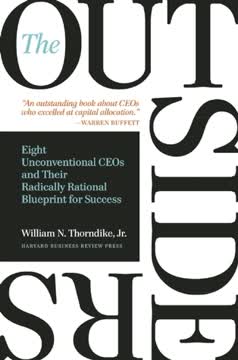

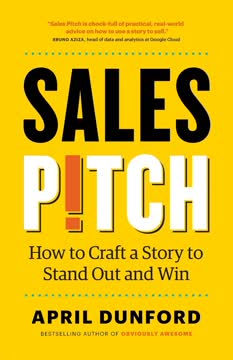


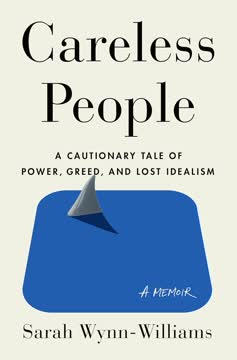
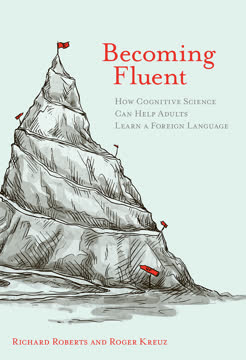


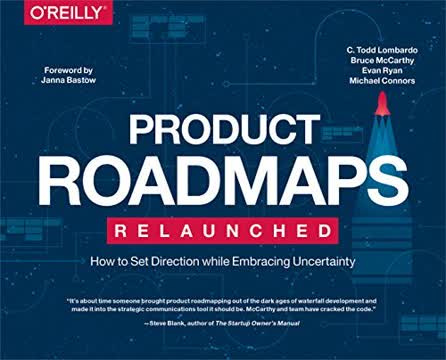
Download PDF
Download EPUB
.epub digital book format is ideal for reading ebooks on phones, tablets, and e-readers.
